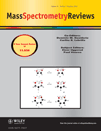
MASS SPECTROMETRY REVIEWS
metrics 2024
Unveiling the Science Behind Spectrometry
Introduction
MASS SPECTROMETRY REVIEWS, published by Wiley, is a premier academic journal dedicated to advancing the field of mass spectrometry and its applications across a multitude of scientific disciplines. With an ISSN of 0277-7037 and an E-ISSN of 1098-2787, the journal has established itself as a vital resource within the realms of Analytical Chemistry, Biochemistry, Genetics, Condensed Matter Physics, and Spectroscopy, achieving Q1 status across these categories in 2023. As a testament to its significant contribution to scholarly research, it boasts impressive Scopus rankings, including a rank of #2 out of 76 in Chemistry - Spectroscopy and #4 out of 156 in Chemistry - Analytical Chemistry, placing it in the 97th percentile and above. Emphasizing high-quality, peer-reviewed research, MASS SPECTROMETRY REVIEWS serves as an essential platform for researchers, professionals, and students aiming to stay abreast of cutting-edge developments and methodologies in mass spectrometry. The journal is committed to fostering a deeper understanding of mass spectrometric techniques while also contributing to interdisciplinary advancements, making it a valuable addition to any academic library. Authors seeking to disseminate their work in a journal with a strong reputation and impact in the scientific community will find MASS SPECTROMETRY REVIEWS an ideal venue.
Metrics 2024
 1.40
1.40 6.90
6.90 7.90
7.90 139
139Metrics History
Rank 2024
Scopus
IF (Web Of Science)
JCI (Web Of Science)
Quartile History
Similar Journals
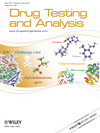
Drug Testing and Analysis
Advancing the Science of Drug Efficacy and SafetyDrug Testing and Analysis is a leading scholarly journal published by WILEY, dedicated to advancing the field of drug testing and analytical methods. With ISSN 1942-7603 and E-ISSN 1942-7611, this journal provides a platform for the latest research in Analytical Chemistry, Pharmaceutical Science, and Environmental Chemistry, holding a prestigious reputation reflected in its Q1 and Q2 rankings across various categories in 2023. The journal promotes high-impact studies that explore innovative methodologies, with a specific focus on pharmacological and toxicological analyses, making it an essential resource for researchers, professionals, and students concerned with drug efficacy, safety, and environmental impact. With a strong commitment to quality and relevance, Drug Testing and Analysis remains at the forefront of contemporary scientific inquiry, contributing significantly to both academic and practical advancements in the industry.
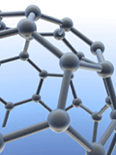
Annual Review of Analytical Chemistry
Navigating the Landscape of Analytical AdvancementsAnnual Review of Analytical Chemistry, published by Annual Reviews, is a premier journal that serves as a critical resource in the field of analytical chemistry, providing comprehensive and cutting-edge reviews that synthesize recent advancements and pivotal research findings. With an impressive impact factor and ranked Q1 in both Analytical Chemistry and Miscellaneous Medicine, it stands as a leader in disseminating knowledge that spans the intricacies of chemical analysis, enhancing the scientific discourse within the community. Available in both print (ISSN: 1936-1327) and online (E-ISSN: 1936-1335), the journal is accessible to a wide audience, fostering innovation and collaboration among researchers, professionals, and students alike. Its scope includes the converged years from 2008 to 2024, showcasing its commitment to providing relevant and timely insights that impact practice and education in analytical techniques, methodologies, and applications. The Scopus rank of #6 out of 156 in Analytical Chemistry, placing it in the 96th percentile, underscores its significance and the high regard in which it is held. As you explore the journal's offerings, you will find a wealth of knowledge that not only informs but inspires future discoveries in the realm of analytical chemistry.
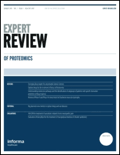
Expert Review of Proteomics
Pioneering Reviews in the World of Proteomics.Expert Review of Proteomics, published by TAYLOR & FRANCIS LTD, is a distinguished journal that focuses on the latest advancements in the field of proteomics, a critical area within biochemistry and molecular biology. With an ISSN of 1478-9450 and E-ISSN 1744-8387, this journal has been pivotal in disseminating high-quality research from its inception in 2004 to its planned convergence in 2024. Its influential position is reflected in its 2023 rankings, placing it in the Q2 category for both Biochemistry and Molecular Biology, alongside respectable Scopus rankings that rank it 118th and 141st in its respective categories. Despite its non-open access structure, Expert Review of Proteomics provides researchers and professionals with a vital platform for critical reviews and insights into proteomic methodologies, thus contributing significantly to the global scientific community. By bridging theoretical research with practical applications, it serves as an essential resource for those dedicated to advancing their knowledge and expertise in this dynamic field.
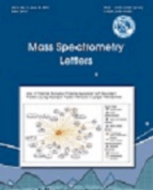
Mass Spectrometry Letters
Transforming Research into Accessible Knowledge.Mass Spectrometry Letters is a pioneering open-access journal published by the Korean Society for Mass Spectrometry, specializing in the diverse fields of analytical chemistry, biochemistry, and spectroscopy. Established in 2010, this journal aims to disseminate groundbreaking research and advancements in mass spectrometry and its applications across various scientific domains. Though currently categorized in the Q4 quartile in key analytical fields, Mass Spectrometry Letters serves as an essential platform for researchers, professionals, and students to share innovative methodologies, emerging trends, and practical applications of mass spectrometry, thus fostering collaboration and advancing knowledge in the scientific community. With a commitment to open access, articles published since 2010 are readily available, enabling widespread distribution and engagement within the international research community. Located in Daejeon, South Korea, and actively converging research through 2024, the journal holds the potential to grow its impact and relevance within the dynamic landscape of mass spectrometry.

Journal of Mass Spectrometry and Advances in the Clinical Lab
Advancing Knowledge at the Intersection of Biochemistry and TechnologyJournal of Mass Spectrometry and Advances in the Clinical Lab, published by Elsevier, serves as a premier resource within the fields of clinical biochemistry, medical laboratory technology, microbiology, and spectroscopy. Launched in 2021 with an Open Access model, this journal enhances the accessibility of innovative research, making it an ideal platform for researchers, practitioners, and students alike. With an impressive impact factor reflected in its quartile rankings—Q2 in Clinical Biochemistry and Microbiology, and Q1 in Medical Laboratory Technology and Spectroscopy—this journal ensures high visibility and credibility. The journal's diverse indexing and significant standings in Scopus rankings highlight its commitment to advancing knowledge and fostering collaboration among professionals in laboratory sciences. Endorsed by a robust editorial board comprising leading experts, the journal aims to disseminate cutting-edge findings and methodologies, contributing to significant advancements in clinical and scientific laboratory practices. By bridging theoretical frameworks and practical applications, this journal plays a crucial role in the continuous evolution of laboratory technologies, thereby empowering readers to push the boundaries of research and innovation in their fields.
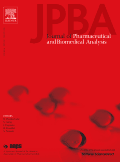
Journal of Pharmaceutical and Biomedical Analysis
Innovative insights for tomorrow's drug discovery.The Journal of Pharmaceutical and Biomedical Analysis, published by ELSEVIER and available in print and online formats, stands as a pivotal source of knowledge in the realms of Analytical Chemistry, Clinical Biochemistry, Drug Discovery, and Pharmaceutical Science. With an ISSN of 0731-7085 and an e-ISSN of 1873-264X, this journal is dedicated to publishing high-quality research that advances the understanding and development of analytical techniques in pharmaceuticals and biomedicine. The journal has earned a solid reputation, reflected in its Q2 category rankings across five distinct fields for 2023, and boasts impressive Scopus rankings, signaling its robust impact within the academic community. The Journal of Pharmaceutical and Biomedical Analysis serves as an essential resource for researchers, professionals, and students alike, providing actionable insights and fostering innovation that can directly influence future advancements in drug development and biomedical applications.

MOLECULAR & CELLULAR PROTEOMICS
Exploring the intersection of biochemistry and analytical chemistry.MOLECULAR & CELLULAR PROTEOMICS, published by Elsevier, stands as a premier journal in the fields of Biochemistry, Analytical Chemistry, and Molecular Biology, with a distinguished Q1 ranking reflecting its high impact and contribution to the scientific community. Established in 2002, this journal has consistently provided a platform for the latest research in protein science, merging molecular biology with advanced analytical techniques. With impressive Scopus rankings—41st in Biochemistry and 16th in Analytical Chemistry—it caters to an audience of researchers, professionals, and students eager to explore cutting-edge developments in proteomics. Although currently not designated as open access, the journal aims to foster knowledge dissemination through accessible research content. As it continues to evolve until 2024, MOLECULAR & CELLULAR PROTEOMICS is essential for anyone passionately engaged in the ever-expanding field of proteomics.

Molecular Omics
Unlocking the Secrets of Molecular MechanismsMolecular Omics is a premier, peer-reviewed journal published by the Royal Society of Chemistry, focusing on the interdisciplinary field of molecular biology with significant implications for biochemistry and genetics. With an E-ISSN of 2515-4184, this journal has been dedicated to disseminating high-quality research since its inception in 2018, maintaining an impressive trajectory in academic contributions until 2024. Currently, it holds a Q2 quartile ranking in both Biochemistry and Genetics, alongside a Q3 ranking in Molecular Biology for 2023, highlighting its relevance and influence in these domains. The journal is accessible as an open access publication, promoting the widespread dissemination of groundbreaking research. As part of a vibrant academic community, Molecular Omics aims to bridge fundamental and applied science, appealing to researchers, professionals, and students eager to expand their knowledge on molecular mechanisms and technologies that shape the future of biological research.

Analytical and Bioanalytical Chemistry Research
Enhancing Understanding through Open Access Chemistry.Analytical and Bioanalytical Chemistry Research is an esteemed open-access journal published by the Iranian Chemical Society, dedicated to the advancement of knowledge in the fields of analytical chemistry, biochemistry, and spectroscopy. Since its inception in 2014, this journal has provided a platform for researchers, professionals, and students to publish and access high-quality research articles that contribute to the understanding of chemical analysis and bioanalytical methods. With an ISSN of 2383-093X and an open-access model that promotes global dissemination of findings, it ensures that innovative research reaches a broad audience. The journal has consolidated its presence in the scientific community, currently ranked in quartile Q4 for analytical chemistry, biochemistry, and spectroscopy as of 2023. Its Scopus rankings, including a percentile of 34th in Analytical Chemistry, reflect its commitment to quality research and scholarly contribution. Situated in Tehran, Iran, the journal serves as a vital resource for academic discourse, offering insights into emerging trends and methodologies in analytical and bioanalytical chemistry.

ANALYTICAL AND BIOANALYTICAL CHEMISTRY
Pioneering Innovative Research in ChemistryANALYTICAL AND BIOANALYTICAL CHEMISTRY, published by SPRINGER HEIDELBERG, is a leading international journal that serves as a vital platform for innovative research in the fields of analytical and bioanalytical chemistry. With an impressive impact factor and ranking in the Q2 category for both Analytical Chemistry and Biochemistry, the journal highlights key advancements and methodologies that drive the discipline forward. Established in 1996 and continuing vigorously into 2024, it has gained significant recognition with Scopus rankings placing it in the 83rd and 78th percentiles within its categories, underscoring its impact and relevance. The journal's commitment to open access facilitates widespread dissemination of critical scientific knowledge, making it an essential resource for researchers, professionals, and students dedicated to exploring the complexities of chemical analysis. With its base in Heidelberg, Germany, ANALYTICAL AND BIOANALYTICAL CHEMISTRY continues to inspire and influence the global research community.